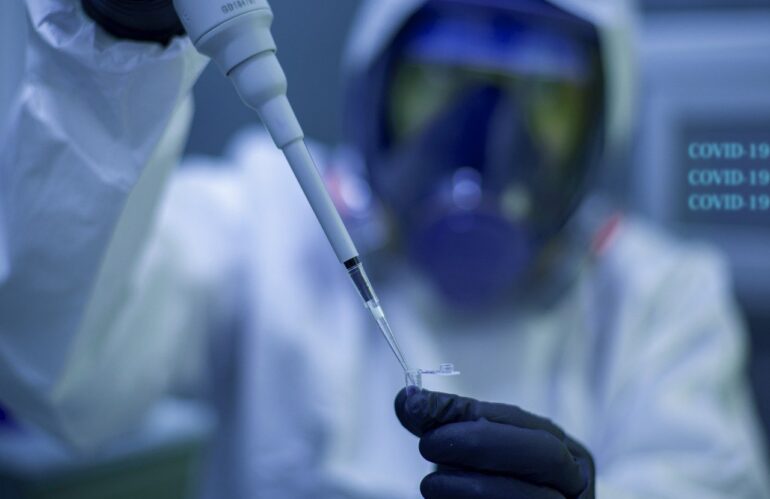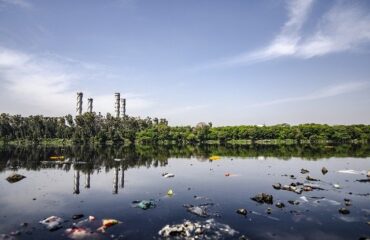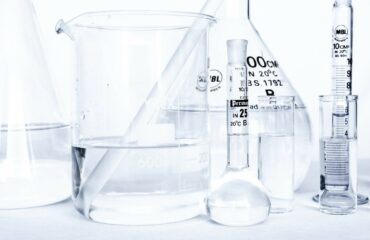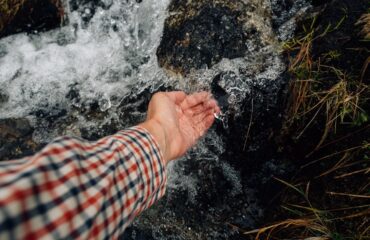Water quality is the chemical, physical and biological characteristics of water based on the standards of its use. They are most commonly used in relation to a set of standards, compliance with which, usually achieved through water treatment, can be evaluated. The most common standards used to monitor and evaluate water quality reflect the health of ecosystems, the safety of human contact and the condition of drinking water. Water quality has a significant impact on water supply and often determines supply options.
Water quality parameters are determined by the intended use. Water quality work generally focuses on water that is treated for drinking water, industrial/domestic use, or restoration (of the environment/ecosystem, usually for human health/ aquatic life).
Human Consumption
Pollutants that may be in untreated water include microorganisms such as viruses, protozoa, and bacteria; inorganic pollutants such as salts and metals; organic chemical pollutants from industrial processes and oil use; pesticides and herbicides; and radioactive contaminants. Water quality depends on local geology and ecosystem, as well as human use such as wastewater dispersion, industrial pollution, use of water bodies as heat sinks, and overuse (which can lead to lower water levels).
The U.S. Environmental Protection Agency limits the amount of certain contaminants in tap water provided by U.S. public water systems. The Safe Drinking Water Act authorizes EPA to issue two types of standards:
- Primary standards regulate substances that potentially affect human health;
- secondary standards prescribe aesthetic qualities that affect taste, odor, or appearance.
U.S. Food and Drug Administration regulations set limits for contaminants in bottled water. Drinking water, including bottled water, can reasonably be expected to contain at least small amounts of some contaminants. The presence of these contaminants does not necessarily indicate that the water is a health hazard.
In urbanized areas around the world, water treatment technology is used in municipal water systems to remove contaminants from the source water (surface water or groundwater) before it is distributed to homes, businesses, schools and other recipients. Water taken directly from a stream, lake or aquifer and not treated in any way will be of uncertain quality in terms of potability.
Industrial and Domestic Uses
Dissolved ions can affect the suitability of water for a variety of industrial and domestic uses. The best known of these is probably the presence of calcium (Ca2+) and magnesium (Mg2+), which interfere with the cleansing action of soap and can form hard sulfate and soft carbonate deposits in water heaters or boilers. Hard water can be softened to remove these ions. The softening process often replaces sodium cations. For some populations, hard water may be preferable to soft water because of health problems associated with calcium deficiency and excess sodium. The need for extra calcium and magnesium in water depends on the population in question, because people usually meet their recommended amounts through food.
Environmental water quality
Environmental water quality, also called environmental quality, refers to water bodies such as lakes, rivers, and oceans. Water quality standards for surface waters vary greatly due to different environmental conditions, ecosystems, and intended human uses. Toxic substances and high populations of some microorganisms can pose health risks for non-drinking uses such as irrigation, swimming, fishing, rafting, boating, and industrial uses. These conditions can also affect wildlife that use the water for drinking or as habitat. According to the EPA, water quality laws generally specify protections for fishing and recreational use and require, at a minimum, that current quality standards be maintained.
There is some desire among the public to return water bodies to pristine, or pre-industrial conditions. Most modern environmental laws focus on designating specific uses of a waterbody. In some countries, these designations allow some water pollution as long as the particular type of pollution does not harm the designated uses. Given changes in the landscape (e.g., land development, urbanization, forest clearing) in the watersheds of many freshwater bodies, a return to pristine conditions would be a major challenge. In these cases, environmental scientists focus on the goals of maintaining healthy ecosystems and may focus on protecting populations of endangered species and protecting human health.
Sampling and Measurement
The complexity of water quality as a subject is reflected in the many types of water quality measurements. Some water quality measurements are most accurately made in situ because the water exists in equilibrium with the environment. Measurements typically made in situ and in direct contact with the water source in question include temperature, pH, dissolved oxygen, conductivity, redox potential (ORP), turbidity, and Secchi disk depth.
More complex measurements are often performed in a laboratory requiring the water sample to be collected, stored, transported, and analyzed elsewhere. The water sampling process poses two significant problems:
- The first problem is how representative the sample can be of the water source of interest. Water sources vary in time and location. The measure of interest may vary from season to season or from day to night or in response to some human activity or natural populations of aquatic plants and animals. The measure of interest may vary with distances from the water’s boundary with the overlying atmosphere and the underlying or bounding soil. The sampler must determine whether a single time and place satisfies the needs of the study, or whether the water use of interest can be satisfactorily evaluated from averages of time and place sampling, or whether critical highs and lows require individual measurements across a range of times, places, or events. The sampling procedure should ensure that individual sampling times and locations where averaging is appropriate are properly weighted. Where critical maxima or minima exist, statistical methods must be applied to the observed variations to determine a sufficient number of samples to estimate the probability of exceeding these critical values.
- The second problem arises when the sample is removed from the water source and begins to establish chemical equilibrium with its new environment, the sample container. Sample containers should be made of materials with minimal reactivity with the substances being measured, and pre-cleaning the sample containers is important. The water sample can dissolve part of the sample container and any residue on that container, and chemicals dissolved in the water sample can be sorbed on the sample container and remain there when the water is poured out for analysis. Similar physical and chemical interactions can occur with any pumps, piping, or intermediate devices used to transfer the water sample to the sample container. Water collected from the depths below the surface is usually held at reduced atmospheric pressure; therefore, gas dissolved in the water will collect at the top of the container. Atmospheric gas above the water may also dissolve into the water sample. Other equilibria of chemical reactions may change if the water sample changes temperature. Fine solids previously suspended by water turbulence may settle to the bottom of the sample container, or a solid phase may form as a result of biological growth or chemical deposition. Microorganisms in the water can biochemically change the concentration of oxygen, carbon dioxide and organic compounds. Changing the concentration of carbon dioxide can change the pH and change the solubility of chemicals of interest. These problems are of particular concern when measuring chemicals that are considered significant at very low concentrations.
Preserving the sample can partially solve the second problem. A common procedure is to keep samples cold to slow the rate of chemical reactions and phase changes, and analyze the sample as soon as possible; but this simply minimizes changes, not prevents them. A useful procedure for determining the effect of sample containers during the delay between sample collection and analysis involves preparing for two artificial samples in advance of the sampling event. One sample container is filled with water that is known from the previous analysis to contain no detectable amount of the chemical of interest. This sample, referred to as an “empty” sample, is opened to expose the atmosphere when the sample of interest is collected, then sealed and transported to the laboratory along with the sample for analysis to determine if the sample collection or storage procedures have introduced any measurable amount of the chemical of interest. A second artificial sample is collected from the sample of interest, but then “spiked” with a measured additional amount of the chemical of interest at the time of collection. The blank (negative control) and spiked sample (positive control) are transferred with the sample of interest and analyzed by the same methods at the same time to determine any changes indicating gain or loss during the elapsed time between collection and analysis.
Testing in response to natural disasters and other emergencies
After events such as earthquakes and tsunamis, relief agencies immediately respond to ongoing relief operations to try to rebuild basic infrastructure and provide the basic fundamental items needed for survival and eventual recovery. The threat of disease is greatly increased by the large number of people living close together, often in squalid conditions and without proper sanitation.
After a natural disaster, as far as water quality testing is concerned, there are widespread opinions on how best to proceed, and various methods can be used. The key basic water quality parameters to consider in an emergency are bacteriological indicators of fecal contamination, residual free chlorine, pH, turbidity, and possibly conductivity/total dissolved solids. There are many methods of decontamination.
After major natural disasters, it can take considerable time before water quality returns to pre-disaster levels. For example, after the 2004 Indian Ocean earthquake, the Colombo-based International Water Management Institute (IWMI) monitored the effects of saltwater and concluded that wells had restored drinking water quality to pre-tsunami levels a year and a half after the event. IWMI developed protocols for cleaning up wells contaminated by salt water; these were subsequently officially endorsed by the World Health Organization as part of its Emergency Guidelines series.
Chemical Analysis
The simplest methods of chemical analysis are measurements of chemical elements without regard to their form. Elemental analysis of oxygen, for example, would show a concentration of 890 g/L (grams per liter) of a water sample because oxygen (O) has 89% of the mass of a water molecule (H2O). The method chosen to measure dissolved oxygen must distinguish between two-atom oxygen and oxygen in combination with other elements. The comparative simplicity of elemental analysis has yielded a large number of sample data and water quality criteria for elements sometimes identified as heavy metals. Water analysis for heavy metals must take into account soil particles suspended in the water sample. These suspended soil particles can contain measurable amounts of metals. Although the particles are not soluble in water, they can be consumed by people drinking the water. Adding acid to the water sample to prevent loss of dissolved metals to the sample container may cause more metals to dissolve from the suspended soil particles. However, filtering soil particles from the water sample before adding acid may result in loss of dissolved metals on the filter. The complexities of differentiating similar organic molecules are even more complex.
Performing these complex measurements can be costly. Because direct measurements of water quality can be expensive, there are usually ongoing monitoring programs and results are published by government agencies. However, there are local volunteer programs and resources available for some general assessment. Tools available to the general public include on-site test kits, commonly used for home aquariums, and biological assessment procedures.
Real-time monitoring
Although water quality is usually sampled and analyzed in laboratories, since the late 20th century there has been a growing public interest in the quality of drinking water provided by municipal systems. Many water utilities have developed systems to collect real-time data on source water quality. In the early 21st century, various sensors and remote monitoring systems were deployed to measure water pH, turbidity, dissolved oxygen, and other parameters. Some remote sensing systems were also developed to monitor ambient water quality in river, estuarine and coastal water bodies.







